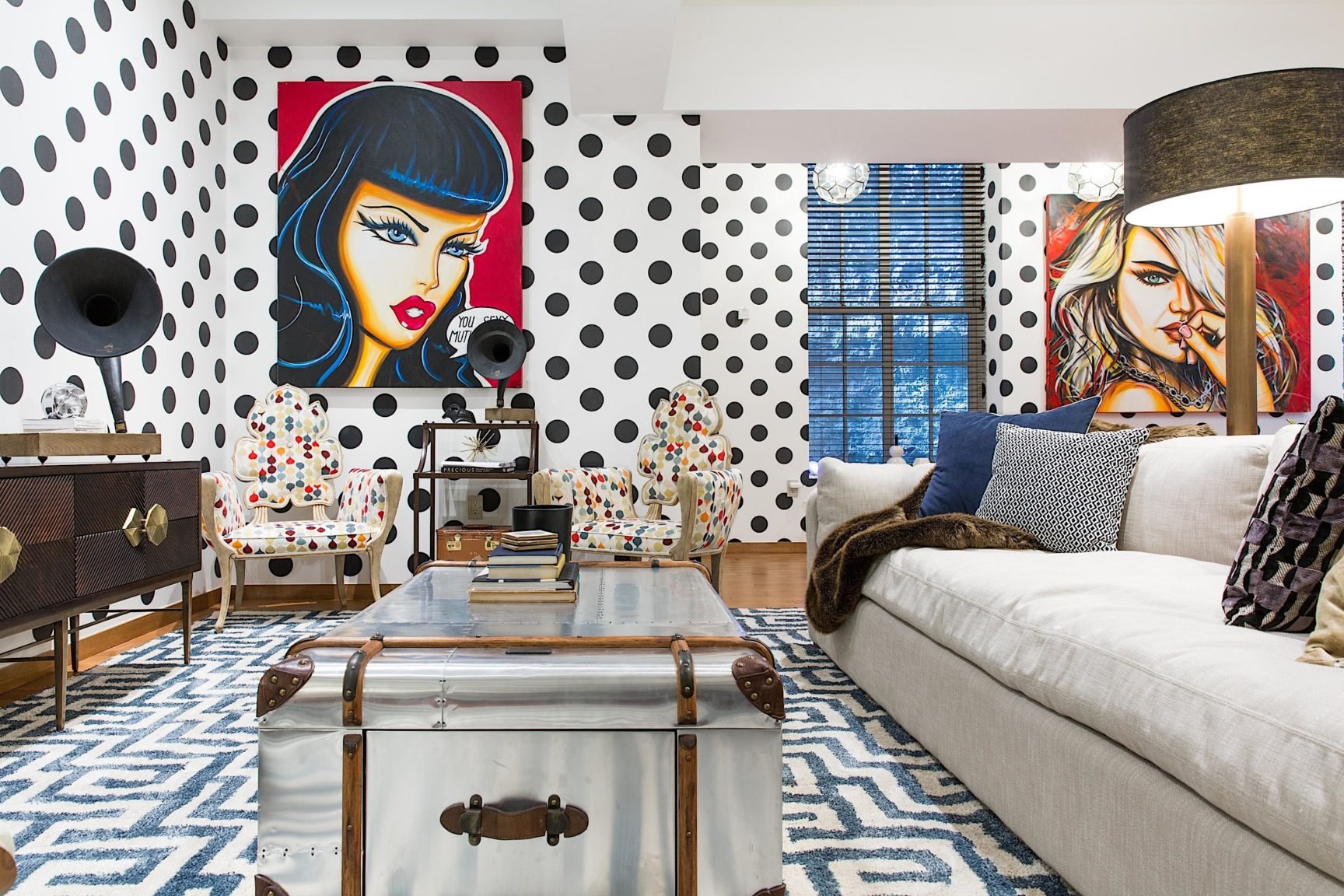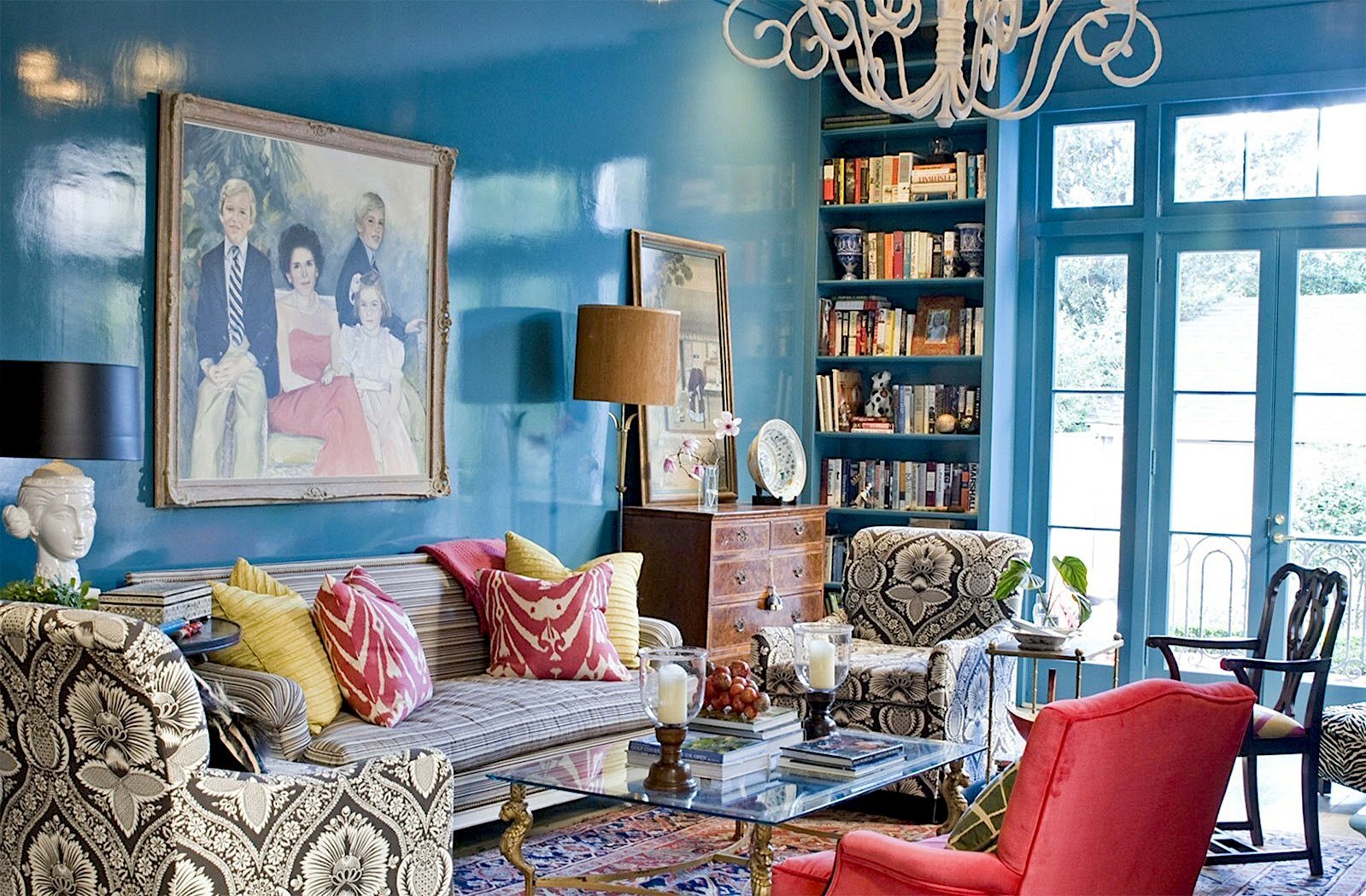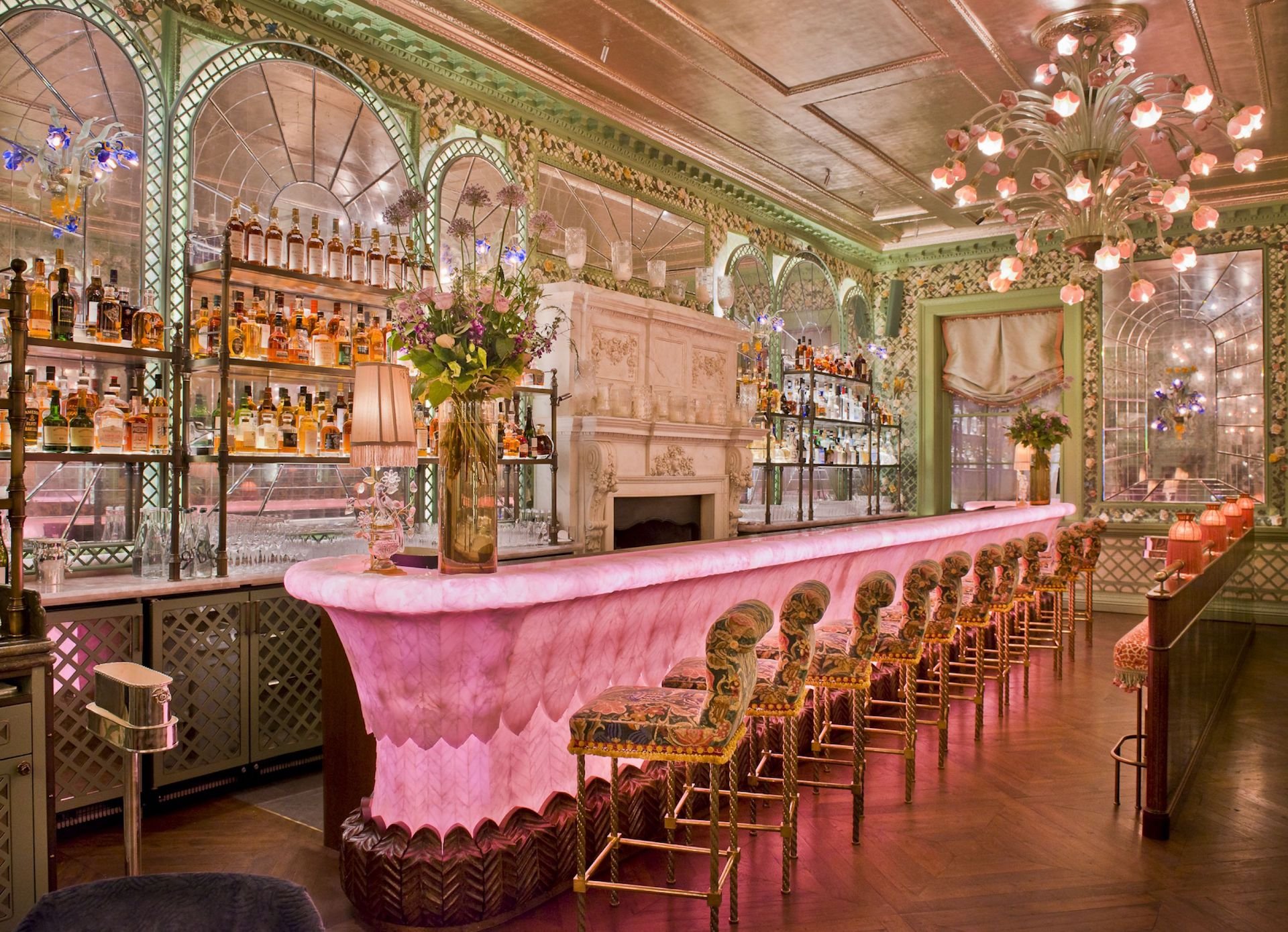Maximalism is to be bold, expressive, loud and rebellious. It doesn’t follow a framework or a set of principles. And it may be a reaction to the boredom of staying indoors during a pandemic, but maximalist design is now at the forefront of interior expression.
Let’s be real. Minimalist design is great, but it’s not for everyone. Some things in life have personalities so big that they simply cannot and do not conform within the boundaries of minimalism. They need to be expressed in ways minimalist design cannot handle. The minimalist movement has survived the past few decades on its strong foundation of hygge focused design. But the idea of comfort and expression means different things for different people. That is where maximalist design thrives.
Interiors by firm Designs by Humans
According to Vox.com, ‘to look at a maximalist home is to get a sense of what the inside of a person’s brain might look like — the places they’ve visited, their heritage, the random objects they’ve amassed over a lifetime. And living in an apartment crammed full of potted dirt and leaves is now, for whatever reason, a status symbol.’
While there’s no origin story for this extroverted style, you can find evidence of it in history. Simply look at the designs from the Victorian era or works from the French renaissance. Intricate design, ornate furnishings, complex shapes, and patterns – these were common and even desired at one time. Another school of thought rationalises the trend of maximalist design as a celebration of the new decade, marked by the end of the 2010s that began with a global economic crisis. The recession pushed people and companies to adopt a frugal approach to design but marketed it as a style statement.
Top: A historical Greek residence by Melissa Rufty; Above: Interiors by Melissa Rufty Designs
Maximalism is to be bold, expressive, loud and rebellious. It doesn’t follow a framework or a set of principles, but you would know it when you see it. Some claim the modern maximalist aesthetic to be rooted in the 1980s style of excess, and can even evoke a bohemian vibe. One common approach is to cover the space in as many items that bring joy and tell a story. “It (maximalism) is more of an attitude than it is an approach,” says New Orleans based designer Melissa Rufty. “And the reason people struggle with it is because you have to check your intimidation at the door. You have to be brave and confident, and know that in this attitude, there is no self-expression that is wrong.”
Liz Dalton, NCIDQ, Interior Designer at Arcsine adds, “People have spent far more time at home in the past year, and suddenly the home has had to fill many more roles – it has become an office, a school, a gym, and a restaurant. This has naturally led people to accumulate more ‘stuff’, but it has also allowed us to appreciate our possessions. A minimalist, neutral space has begun to feel austere in relation to one full of thoughtfully curated and beloved items collected over the years. We are seeing a shift from the KonMari method – the purging of possessions that do not ‘spark joy’ – to a more realistic and attainable method espoused by shows like The Home Edit – ‘a place for everything and everything in its place’. The minimalist aesthetic has become so pervasive that a multitude of colours, textures, and patterns feels like a necessary reset. When you look at the colourful work of designers like Dusen Dusen or Smeg’s wildly patterned collaboration with Dolce & Gabbana, minimalism feels suddenly…boring. And after a long, long year, we are all a little tired of feeling bored.”
Clockwise from top left: Smeg collaboration with Dolce & Gabana; West Elm and Eric Trine collaboration with designers Dusen Dusen;
Move aside Marie Kondo, you’re not going to like what you see.
So what is maximalism in Interior Design?
Simply put, maximalism is a more-is-more approach to interior design to the point that it looks stylish but not chaotic. A common goal is to create that wow factor that’s borderline garish but layered with a touch of class. There are no rules or templates, but there are themes.
“Maximalism is quickly creating a place for itself in the design world after years of hiatus,” says Trisha Awasthi, interior designer at Daun Curry Design Studio. “Pre-pandemic, stimulation of daily life was more than ample, and when people came home, they yearned for a minimalistic refuge, but that is quickly changing. People are spending more time than ever at home, and now a house is not only a place to live but also to work, eat and even play. The core of maximalism is about expressing yourself, bringing different pieces from your life that blend together while boldly revealing your personality. The contrasting patterns, textures, and vivid colours are an opportunity to be fearless and play with the juxtaposition of design styles and period pieces. Instead of selecting pieces based solely on aesthetics, they are meant to be more meaningful and have a special connection, which could be something picked up during your travels or an antique piece of furniture that’s been in a family for generations. Maximalist design is all about layering and balance, and it’s important to see how the undertones of colours, textures and patterns interact with one another within the space. The easiest way to add a great focal to a space is the addition of a vivid wallpaper, which instantly makes the room interesting. The real key to maximalism is to be loud and fearless but make sure you have fun with a space that can truly reflect the best parts of you.”
Above: The Daun Curry designed interiors for Jemma Wyne jeweller in New York
Maximalism is loud and, for lack of a better term, extroverted. The colours and patterns are by no means subtle, and often mixed together to create interesting design themes. Maximalism pushes you to utilise your space to the max and possibly in the boldest way you can. It can seem intimidating to most, but the process is fun and the result can be quite spectacular.
The most obvious element of maximalist design is colour – the foundation of this design style rests on the generous use of multiple shades of colours. More often than not, the colour palette used is bold and contrasting. If you look at interiors designed this way, you’ll see the walls tend to have darker shades as opposed to the white or lighter tones that we are so accustomed to.
Patterns would be the second most obvious element. It’s hard to imagine a maximalism inspired space without patterns that really stand out. We’re not talking subtle design here; we mean bold colourful wallpaper, and even animal prints and crocodile leather surfaces for true audaciousness.
Art is often added in thoughtful amounts to reflect a bit of sophistication to a home or space. Not in maximalism. You can up the space with artwork or posters and still be on-trend. The best part about this is the absence of a need to be perfect. You don’t have to get perfect frames that coordinate with the rest of the decor. It’s focused on what you love and want to show. But as a rule of thumb, make sure the spacing is uniform.
Embrace the fifth wall. Few people would consider decorating the ceiling of a home or space. Then there’s Annabel’s, an exclusive club in Berkeley Square, UK, where not a single inch of the space is spared in the design spec. Even going to the bathroom is an experience – pink silk flowers adorn the ceilings, gold coloured faucets resemble swans, and a hanging unicorn sculpture greets you as you enter. This is maximalism to the max.
Above: The Loos in the Mews at Annabel’s feature breathtaking interiors led by Martin Brudnizki inspired by rainforests and jungles. Over four million pieces of mosaic glass tiles adorn the floors, walls and ceilings in both male and female bathrooms; Top: The Club at Annabel’s. Images credit: Paul Griffith Photography
Essentially, more is more. It’s about filling the space with things you love. More of your favorite colours, books, art, fabrics and accessories. Perfection isn’t the goal. But it’s important to design in a way that shows some semblance of order and structure. Go nuts with the colours, but don’t pick all the colours of the rainbow. Keep it classy.
Is maximalism anti minimalism?
Yes and no. Maximalism and minimalism exist on opposite ends of the design spectrum. Their differences are obvious, but they aren’t completely polar opposites.
Minimalism focuses on subtle hints of colour and pattern with the aim of making your spaces feel large and roomy. It employs minimal use of products and tries to more with less. Minimalism was in fact started as an art movement that found its way into mainstream interior design by piggybacking off the Scandinavian design trend.
Maximalism is utilising the space you have with as much layer and depth as possible. ‘Go loud or go home’ is its motto. It’s all about mixing and matching, but with a clear direction to create a theme. Some say maximalism was started as a reaction to minimalism, rejecting the idea of a simple lifestyle when our lives mean so much more.
But there are similarities. A minimalist design (including Scandinavian design) is practical but not to the point where it mimics the austere life of a monk or hermit. At the same time, maximalism is about surrounding yourself with things you love, but not to the point that it distracts you. Both seek to be positive influences, but they appeal to different personalities. Minimalism and maximalism have comfort built into them, no matter what it is applied to.
This is probably why maximalism is best applied to residential and restaurant design, where there’s a story to tell. In a good way, maximalism is a materialistic approach to design. It’s meant for spaces that have strong personalities that are best told through the decor and objects that inhabit them.









